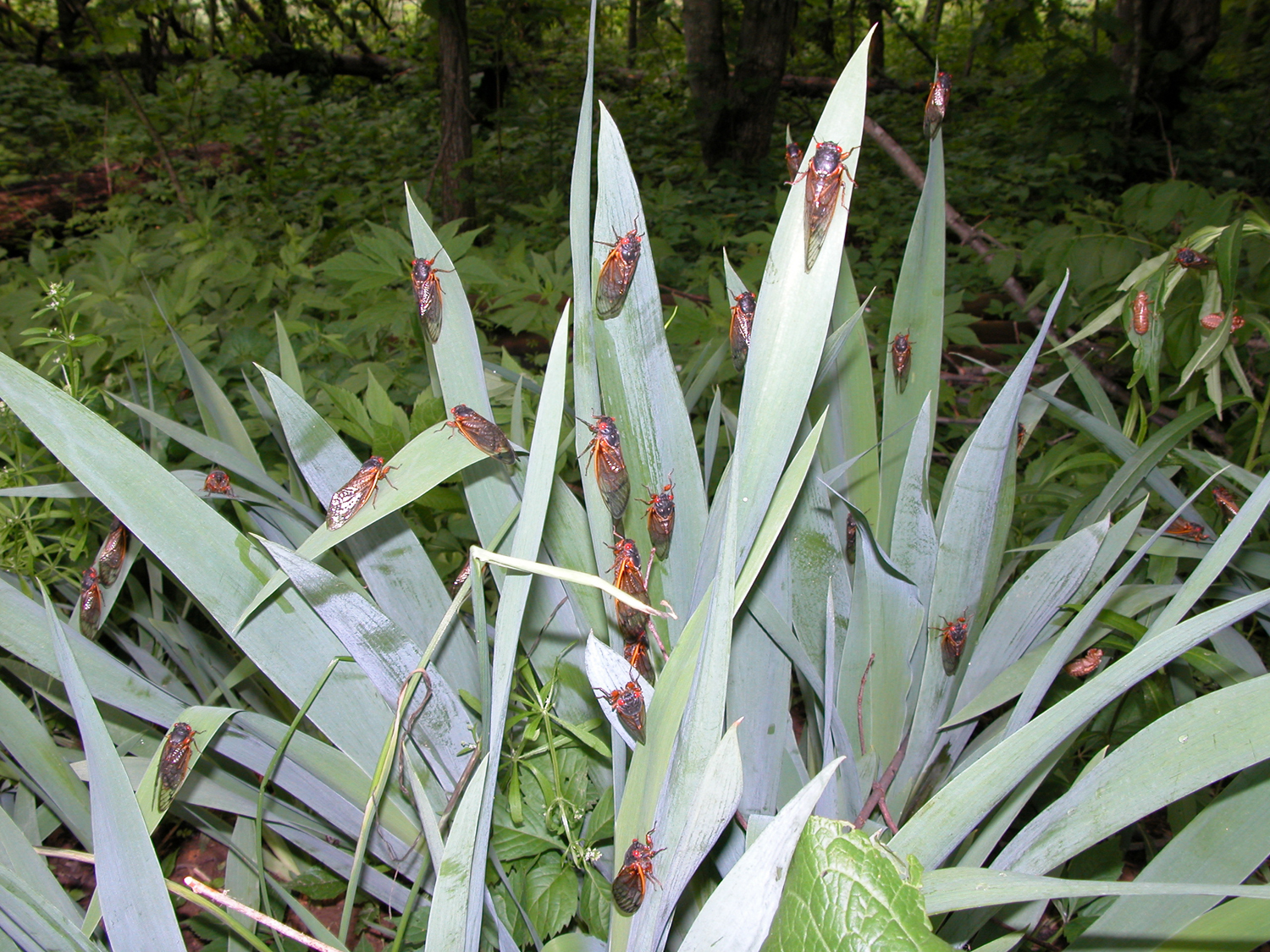Cicada 'invasion' bugs some, excites others

Soon, parts of the East Coast will experience infestations of small beings with blood-orange bulging eyes and bodies that can generate noise as thunderous as roaring motorcycle engines. And let’s not forget their preternatural disposition to make an appearance every 17 years.
If this sounds like the treatment of a bad science fiction film from the 1950s, don’t start rolling out the welcome mat for space invaders just yet — we aren’t talking about aliens from another planet.
We’re talking about the emergence of the 17-year cicadas, and this year we’ll be welcoming Brood II of that club. Starting in early May, from North Carolina to New York, cicadas will be molting at a hardwood tree near you. In Virginia, they will mainly be in the Piedmont Region, which stretches from the falls of the Potomac River to the Blue Ridge Mountains.
The sudden emergence of flaming-eyed insects that are so plentiful they crunch under your feet tends to evoke thoughts of plague and locusts (which they are not).
But, these bugs look scarier than they really are.
The sleepy cicadas nymphs wake up from their 17-year nap in May to come out and play, mate, and cause an aural ruckus. Beyond being nature’s noisemakers, they are relatively harmless insects.
“The only harm they could do is on very young trees with not well-established root systems. They don’t eat leaves and they are not locusts,” said Eric Day, manager of Virginia Cooperative Extension’s Insect Identification Laboratory in the College of Agriculture and Life Sciences’ Department of Entomology.
Adult cicadas live for only two to four weeks during which time they eat relatively little and do not cause any severe damage. Male cicadas sing to attract females using a drum-like structure on the side of the abdomen called a tymbal.
After mating, females lay small eggs in twigs that are one-quarter to one-half-inch in diameter. As many as several dozen eggs can be laid in one branch, with each female laying up to 400 eggs at 40 to 50 sites. Once the eggs hatch, the young cicadas — or nymphs — fall to the ground where they burrow six to18 inches underground and suck on tree root sap for the next 17 years.
“Feeding on tree roots does not make them a pest,” said Day. “They aerate the soil and birds opportunistically feed on them, so there is a kind of benefit.”
But why the 17-year slumber?
“A long period between emergences is a deterrent to predators. You will typically see that they have very few predators or parasites,” he said.
Because it’s difficult to have another cicada brood or predator match up to a prime number, this also means less competition for resources in the bug world.
“You don’t get broods overlapping geographically,” he said.
Despite their Paleozoic — and some may say creepy — appearance they are great ambassadors to the bug world.
“They tend to be a gateway insect for amateur entomologists,” said Day. “You get a lot of amateur entomologists that map them and collect them.”
In fact, Day speaks about the 17-year, or periodical, cicadas as astronomers might pine over the annual Perseid meteor shower or other celestial events that occur sparingly throughout a lifetime and disappear into the ether.
“I have mixed emotions about their emergence. I don’t like farmers or other people to have damage to their trees, but there are people that really like to see the cicadas,” he said. “This only happens in Eastern North America.”
So, sit back and enjoy the spectacular emergence of arthropods that is about to beset us, folks. By and large cicadas are not harmful (some say they are even pretty tasty). And unlike celestial events, you won’t have to stay up until the wee hours of the morning to enjoy cicada singing or marvel at their one-and-a-half-inch wing span.
“People think this is an insect invasion,” Day said. “It’s not an invasion — they’ve been there all along.”




